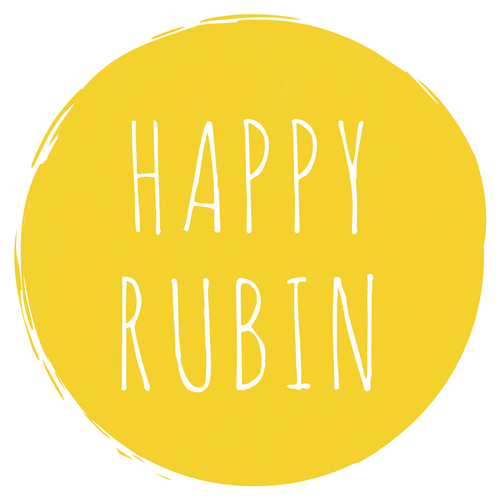![How To Deal With Sensory Overload [9 Tips For Overstimulation]](https://happyrubin.com/wp-content/uploads/2019/12/ik-ben-overprikkeld-150x150.jpg)
The Subconscious Mind: How To Communicate With It? (Tips & Steps)

Sometimes we want to communicate with our subconscious, because the subconscious is so incredibly intelligent. How do we do that? In this article you will find a number of techniques that you will need for this.
Contents of this page:
But first: what does the subconscious mind do for us?
- It preserves memories. They are stored ‘holographically’ in our body, not in our brain! An experiment was once done with mice where they removed their brains after letting the mice memorize a route in a maze. After removing the brain, they could still find the route of the maze.
- It organizes all our memories, for example in a timeline. If you are somehow working with clients’ subconscious, this and the previous bullet is very important to tell your client (if there is report , he will say, oh, ok!).
- The subconscious mind makes associations : it links similar ideas and things. That way it learns very quickly.
- It suppresses memories that contain unresolved negative emotions. It does so with the intention of protecting you.
- It presents you with the repressed memories so that they can be resolved (including the release of the emotions).
- It makes the body function . It has the blueprint for the body and perfect health .
- It protects the body and thus maintains the integrity of the body.
- It is the domain of the emotions .
- It’s a very moral being.
- It likes to serve . It does need clear instructions to follow.
- It takes care of all perceptions : regular and telepathic. These perceptions receive and send it to the conscious brain.
- Generates, stores, distributes and transmits energy .
- Generates habits . It does need repetition until the habit is installed.
- It is programmed to want to discover more and more (and more and more to discover).
- It functions best as a complete integrated unit . It does n’t need any parts to function.
- It’s symbolic: it uses and responds to symbols .
- It can not handle negative formulations directly.
How do you trust your feelings and your subconscious? Our subconscious knows everything, and that can remain subconscious
It is often fine not to know something consciously. The subconscious mind knows. Leave it to the subconscious mind. Do you remember it was your birthday? When you received the presents, did you know what the presents would be? No, you were allowed to unpack them and you only knew at the last minute.
“I do not know.” “That’s right, you don’t know. Your unconscious knows.”
That is allowed with technology, for example: six-step re-framing. You can then just do that technique completely without being aware of the content of the changes that the subconscious mind has made for you. Also with timeline therapy , the techniques can go extra fast so that you cannot consciously think about them.
Getting the green light from the subconscious mind: 3 techniques to communicate with the subconscious

Suppose you still want to be aware of a signal or an answer from the subconscious. Most importantly, you rely on any signal that comes up. That can be:
- A feeling in your body, such as a tingling, a light or a heavy feeling.
- An emotion.
- An image.
- A sound.
- A gesture.
- A thought.
- Involuntary muscle movements.
- An impulse to do something.
- Lean in a certain direction.
- When you do the postural sway, your body will notice one direction for yes, and another direction for no.
- Just take the first word that comes to mind. It can help to ask someone else to snap their fingers and have them say “now.”
Just take anything that comes directly to mind as the answer from the subconscious mind. In addition, below you will find three techniques for communicating with the subconscious in other ways.
For example, you can use a bio-feedback mechanism for questions to the subconscious. Sometimes you want to find out whether someone really wants or can handle something from within. To ask questions of a person’s subconscious mind, you can set up a bio-feedback mechanism, such as a muscle test. You can also use this to make the client not answer consciously so that he or she can remain fully in the exercise.
Technique 1: Working with a pendulum as a bio-feedback mechanism
A pendulum works because infinitely small micro-muscle movements, which are controlled by the subconscious, go to the hand. There is no external force to move the pendulum. Nor is there any voodoo or magic involved.
- Have the client lean his elbow on something and have his wrist form a right angle to his forearm and the forearm at a V angle to the upper arm. In this way, the pendulum can move freely without the arm getting tired. Use the shuttle on the index finger of the dominant hand. Finally, it is important that the client keeps his eyes open constantly.
- Get the client to tune in with their subconscious mind by having them say, for example, “I really appreciate you taking care of me and I want to ask you to help me get some honest answers to the topic I’m currently working on loves. ”
- Create the signal of ‘yes’, ‘no’, ‘I don’t know’ and ‘maybe’. “Give me the sign for “ “Now give me the sign for no.” As you read, the instructions are directive.
- Calibrate and test these characters. Say something absolutely true (about the client) and observe. Say something that is absolutely untrue and observe.
- Send the conscious away, for example by thinking of a neutral memory. You can also use other ways to deduce the conscious .
- Ask the questions you want answers to. These are closed questions.
- Also ask how much time it takes for the subconscious to reach the goal or complete healing.
Technique 2: Muscle tests as a communication tool for the subconscious mind
You can also use muscle tests, for example by using a hand as a feedback mechanism. For example, one finger stands for ‘yes’ and two fingers for ‘no.’
When using a shuttle, pay attention to the following:
- The elbow must rest on something.
- The client is always watching the shuttle.
- When the shuttle barely moves or seems reluctant, you can ask, “Is there any reason why you don’t want to answer?” Then go through possible reasons such as, “Are you worried the answer will be unpleasant?”
- The very first question to the subconscious mind is, “Do you know what to do to solve this problem? Do you know what to do to assist {client name} in solving the problem and achieving the goal? ” The subconscious often already knows. You have already gathered all the resources you need somewhere in your past or somehow. If the answer is no, ask the subconscious to make contact with the higher self. That is a piece that wants to be divine and is therefore a source of development. If the answer is still no, use timeline therapy, for example, to get rid of the underlying problems first.
- “Is it possible to cure the unwanted situation and achieve the goal?” If you don’t, you ask your higher self because progress is possible through the higher self. You can do anything as long as you agree with your subconscious or your higher self.
- “Is it okay to go to the desired situation?” Working with clients is all about ecology and congruence, so we check this regularly.
- “Are there other problems that the subconscious mind wants to work on?” At Yes you start again at step 1.
- Consciously giving consent. “Okay you have permission, just go heal the body / set the RAS for the purpose.”
- Ask the subconscious, “How much time do you need?” “When do you start and when do you finish healing? Right now? In an hour? Day? Week? Month? Etc.”
Technique 3: Establishing communication with the subconscious mind using the Betty Erickson Trance Induction
This is originally a technique to put yourself in hypnosis. It is also very suitable to use for requesting signals from the subconscious, because it puts your feeling on edge. So doing this technique makes it much easier to notice signals from the subconscious mind afterward!
Note: the tool we use for this, the Betty Erickson Induction, can be played. You can deviate from the procedure yourself, because it is not a hard script. The point is that you open up your feelings more.
- Focus on a point on the wall in the distance.
- Broaden your peripheral vision. Meter by meter, until your peripheral vision reaches 360 degrees.
- Pace the experience of the client by listing a number of things for each subject element (or let the client list these things himself), and then with the following pattern: First: 3x Ve, 3x Ae, 3x Ke
For example: I see the dot on the wall, a painting on the left, a window on the right.
I can hear the traffic outside, the paper rustling in the corner of the room, and the sound of the computer across the room.
I feel my back against the chair, my feet on the floor and my hands in my lap. Then immediately: 2x Ve, 2x Ae, 4x Ke Then: immediately: 1x Ve, 1x Ae, 4x Ki Finally: close your eyes. Name one thing you can see in your body, name one thing you can hear in your body and name 4 things you can feel in your body - Now we have continuously increased the sensitivity of the kinesthetic system, making it easier for us to pick up unconscious signals. So now is the time to ask the subconscious mind for a yes signal: “Dear subconscious mind, I am kindly requested to communicate with me by offering a yes signal.”
- Ask the subconscious mind to amplify this signal if it was the yes signal.
- Thank the subconscious mind for working together and wait for the signal to fade.
- Now try to reproduce the signal consciously. This should not be possible if it is an unconscious signal.
- Repeat the process for a no signal.
You have now made communication with your subconscious mind and you can now use these yes and no signals.
A number of things that you can communicate with your subconscious mind

You can use the yes and no signal for example for the technique: 6-step reframing (N-Step Reframe). You can also use it for other purposes, such as resetting the subconscious. You can do this by using the following steps, for example:
- Is there anything you (the subconscious mind) want to change – outside of my conscious attention, that is ecological and can that be done within x period? (Yes No)
- Do you have sources / options to make this happen? (Yes No)
- Can you organize the resources for change today? (Yes No)
- Can you be ready within x period? (Yes No)
- Start now.
- End with a representation – in other words: a visualization – of a well-formulated goal.
What do you do when the subconscious mind says no?
If the subconscious says no, you can:
- First, be grateful that the subconscious is communicating with you.
- Accept the no as the final answer.
- Asking what the positive intention of the no is.
- Treating ecology, for example asking what needs to be done first – what the objection is – before we can continue.
- Broaden the timeframe: “So the changes won’t be completed within a week, but will be completed within a month?”
- Asking the same question in a different way.
The smart subconscious mind: conditioning is very nice in many cases

Since birth, our brain has made all kinds of connections by connecting tastes, smells, sounds, images and touches with thoughts and emotions. This is how we learned as a child. Everything we learned was stored in different parts of our nervous system.
Thanks to these connections, in our first years of life, we could learn, for example, what an apple looks like, what color you can recognize an apple and whether we like an apple.
As we grew up, we gathered even more useful information. It is useful that you can look at the clock and understand what time it is, that you know that you have to stop at red and can continue driving at green, that you get disgusted when you smell rotting food and that you can enjoy chirping birds .
So learning through the power of the unconscious is very useful!
But often not …
These connections are made completely automatically. Your unconscious controls this, so that you do or determine all kinds of things automatically. For example, you can create the habit of having a cup of coffee every morning, always putting your plate away after dinner, brushing your teeth before going to sleep and locking your bike when you put it down somewhere.
Handy habits. Otherwise you would have to consciously think and exert yourself in each of these actions. Unfortunately, you must also have built up habits that do not help you forward and in some cases even cause damage. For example, your subconscious mind controls that you eat chocolate cookies every night, talk through people, doubt yourself, check Facebook every hour or that you often have to frown.
The healing power of the subconscious mind
On an even more unconscious level, all kinds of things happen that are very powerful, and fortunately also positive. For example, your body automatically signals hunger and thirst, fractures are repaired in a few months, your body temperature is constantly kept at the right level, an alarm is sounded at intruders and the body then heals itself. Twenty-four hours a day, seven days a week and without vacation, your subconscious mind is at work.
Many illnesses are indeed psychosomatic: your body reacts to what you think. For example, you may spontaneously blush when thinking about an embarrassing moment. We also like to exaggerate our situation. You think you have more than you actually have. You have a little bit of ailment and a lot of emotions. You live. You have many emotions. A little bit and a lot of emotions.
You can read how you can use this healing power in this article about the self-healing power.
Test: Mental forces are stronger than physical forces

Our mental healing power is even more powerful than the physical forces acting on us. If you give a Ritalin pill, which makes you very busy, to someone who tells you that it is a calming pill, he will start to act very calmly. If you give Xanax, which makes you very calm, to someone who tells you that it is Ritalin, he will start acting very busy. And even if the client is aware of this placebo concept, it will still work.
Our subconscious does not distinguish between real and memory or an idea. Just think of dream. That’s why we feel pain or cry when a character in a movie goes through something bad. Actors are actually excellent hypnotists / nlp’ers. The past also only exists in our thinking.
NLP and other methods to get started with the subconscious are guaranteed not always to work. “Always” is a generalization, and all generalizations are lies. NLP often works very well.
How will you use this healing power?
Now that you know that the unconscious can perform all kinds of tasks so effectively without you noticing: what else would you like to use it all for?
You can consciously know what your problem is and what you want differently. You can also read books … but for real change you want to change the automatic programs of the subconscious.
With NLP you can control these forces and direct them to achieve great things, both physically and mentally. For example, there is the visual squash technique , with which you work with the subconscious mind. Also ‘pure visualization techniques’ such as the New Behavior Generator , make use of the subconscious mind … simply because visualization is the domain of the subconscious.
And there are more ways to work with the subconscious …
- The first 7 years of life can be changed in the Change Personal History technique.
- Other NLP techniques, such as the generation of new behavior in six-step reframing and the generation of an ideal self-image in the Swish technique.
- Repeating hypnosis and hypnotic suggestions for the new pattern.
- Shock / pattern interruption and the pain pleasure principle (I have to stop smoking now, otherwise I will get terminal cancer).
- PSYCH-K , which also changes beliefs.
For example, thanks to working with the subconscious, we can remove all kinds of habits from the brain and store new habits. The subconscious works much more powerfully for this than when you consciously try to change something.
Imagine the other valuable habits you could install! During an NLP Practitioner Training you will learn all kinds of techniques to get started.

![5 Best Self Care Tips For College Students [#1 Advice]](https://happyrubin.com/wp-content/uploads/2021/09/the-best-self-care-tips-for-college-students-440x264.jpg)
![How To Stick To New Year’s Resolutions: 9 Tips [Smart & Sure Ways]](https://happyrubin.com/wp-content/uploads/2019/12/tips-voor-goede-voornemens-440x264.jpg)
![How To Stop Being So Hard On Yourself [9 Great Tips]](https://happyrubin.com/wp-content/uploads/2019/12/we-moeten-zoveel-van-onszelf-en-anderen-150x150.jpg)

![19 Best Ice Breaker & Get-To-Know-Eachother Games [Fun & Simple]](https://happyrubin.com/wp-content/uploads/2018/02/leukste-ijsbrekers.jpeg)
![Becoming More Social: 41 Tips [Improving Social Skills] [List]](https://happyrubin.com/wp-content/uploads/2018/06/sociale-vaardigheden1.jpeg)
![How to start a conversation with anyone: 15 tips [Making contact]](https://happyrubin.com/wp-content/uploads/2017/08/gesprekstechnieken1.jpeg)
![372 Friend Tag Q&A Questions [Best Friend Quiz]](https://happyrubin.com/wp-content/uploads/2019/05/best-friend-tag-vragen-voorbeelden.jpg)



![Clingy & controlling behavior of partner/date [Extreme examples]](https://happyrubin.com/wp-content/uploads/2020/06/claimerig-gedrag-van-partner-eigenschappen-en-voorbeelden-150x150.jpg)

![How to recognize if a man is in love [Signals & his body language]](https://happyrubin.com/wp-content/uploads/2020/05/verliefd-gedrag-van-mannen-herkennen-150x150.jpg)


![Free will and religion / theology [Verses & Quotes on free will]](https://happyrubin.com/wp-content/uploads/2020/10/religion-on-free-will-quotes-1050x640-1-150x150.jpg)

![Dealing With Setbacks & Hardship [Lessons & Examples]](https://happyrubin.com/wp-content/uploads/2018/11/omgaan-met-tegenslag-tips-hoe-dan.jpeg)
![NLP Agreement Frame: Use these exact sentences [Examples]](https://happyrubin.com/wp-content/uploads/2020/10/agreement-frame-nlp-1125x640-1-440x264.jpeg)
![122 Best Comebacks In Any Situation [Best Examples]](https://happyrubin.com/wp-content/uploads/2020/06/beste-comebacks-technieken-tips-440x264.jpg)
![Using Hypnosis to Stop Smoking [HowTo]](https://happyrubin.com/wp-content/uploads/2020/05/stoppen-met-roken-door-hypnose-150x150.jpg)
![Presuppositions language pattern: meaning & examples [NLP]](https://happyrubin.com/wp-content/uploads/2020/04/wat-zijn-vooronderstellingen-150x150.jpg)
![Peripheral Vision: Meaning & Exercise [Essential Skill]](https://happyrubin.com/wp-content/uploads/2020/04/perifeer-zicht-trainen-tips-150x150.jpg)

![How To Start A Coaching Business [21 Smart Tips]](https://happyrubin.com/wp-content/uploads/2018/11/coachingpraktijk-starten-tips.jpeg)
![How to make dreams come true? [33 tips to realize dreams 100%]](https://happyrubin.com/wp-content/uploads/2018/05/dromen-mijlpalen.jpeg)
![How To Become Rich? 27 Millionaire Tips [Guaranteed To Work]](https://happyrubin.com/wp-content/uploads/2018/01/hoe-kan-ik-rijk-worden.jpeg)
![77 Best Online Marketing Tools [Recommendations] [Also Free]](https://happyrubin.com/wp-content/uploads/2018/08/beste-onlne-marketing-tools-tips.jpeg)
![Complete List Of Virtues & Qualities [Including Explanation]](https://happyrubin.com/wp-content/uploads/2018/12/kernkwaliteiten-uitleg.jpeg)
![Being Attentive: How Do You Do That? [Meaning & 9 Tips]](https://happyrubin.com/wp-content/uploads/2019/05/attent-zijn.jpg)
![Being Conscientious: Meaning Of This Virtue [Explained]](https://happyrubin.com/wp-content/uploads/2018/07/Consciëntieus-persoon.jpg)


![Best Books About Burn-Out [Top 10] [Update 2024]](https://happyrubin.com/wp-content/uploads/2020/06/beste-boeken-over-burnout-lijst-440x264.jpg)
![Best Self-love Books [Top 10] [Update 2024]](https://happyrubin.com/wp-content/uploads/2020/04/beste-boeken-over-zelfliefde-aanraders-440x264.jpg)
![Life changing books: 10 books that change your life [2024 Update]](https://happyrubin.com/wp-content/uploads/2020/03/levensveranderende-boeken-tips-150x150.jpg)
![Top 10 Best Books: Recommendations Per Genre [2024 Update]](https://happyrubin.com/wp-content/uploads/2019/12/best-books-per-genre-150x150.png)
![Best Books On procrastination: Must Reads [List] [2024 Update]](https://happyrubin.com/wp-content/uploads/2019/11/beste-boeken-over-uitstelgedrag-tips-150x150.jpg)
![Joe Dispenza: Events To Attend [2024 & 2025] [All Info]](https://happyrubin.com/wp-content/uploads/2020/02/joe-dispenxa-events-440x264.png)
![Best Online Study Options [Online Education Top List]](https://happyrubin.com/wp-content/uploads/2019/03/best-home-study-options-440x264.png)
![Teachable Review & Experiences 2024 [Bad Online Training Tool?]](https://happyrubin.com/wp-content/uploads/2020/02/Teachable-review-ervaringen-150x150.png)
![Audible Review, Experiences & Special Discount [Scam?]](https://happyrubin.com/wp-content/uploads/2020/01/audible-review-ervaringen-150x150.png)
![Guest Posts Wanted [Free & Always Directly Accepted]](https://happyrubin.com/wp-content/uploads/2019/05/gastbloggen-regels.jpg)

